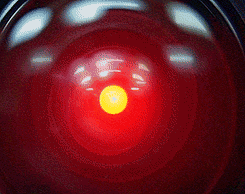A FEW HOURS after dark one evening earlier this month, a small quadcopter drone lifted off from the parking lot of Ben-Gurion University in Beersheba, Israel. It soon trained its built-in camera on its target, a desktop computers tiny blinking light inside a third-floor office nearby. The pinpoint flickers, emitting from the LED hard drive indicator that lights up intermittently on practically every modern Windows machine, would hardly arouse the suspicions of anyone working in the office after hours. But in fact, that LED was silently winking out an optical stream of the computers secrets to the camera floating outside.
That data-stealing drone, shown in the video, works as a Mr. Robot-style demonstration of a very real espionage technique. A group of researchers at Ben-Gurions cybersecurity lab has devised a method to defeat the security protection known as an air gap, the safeguard of separating highly sensitive computer systems from the internet to quarantine them from hackers. If an attacker can plant malware on one of those systemssay, by paying an insider to infect it via USB or SD cardthis approach offers a new way to rapidly pull secrets out of that isolated machine. Every blink of its hard drive LED indicator can spill sensitive information to any spy with a line of sight to the target computer, whether from a drone outside the window or a telescopic lens from the next roof over.
An air gap, in computer security, is sometimes seen as an impenetrable defense. Hackers cant compromise a computer thats not connected to the internet or other internet-connected machines, the logic goes. But malware like Stuxnet and the Agent.btz worm that infected American military systems a decade ago have proven that air gaps cant entirely keep motivated hackers out of ultra-secret systemseven isolated systems need code updates and new data, opening them to attackers with physical access. And once an air-gapped system is infected, researchers have demonstrated a grab bag of methods for extracting information from them despite their lack of an internet connection, from electromagnetic emanations to acoustic and heat signaling techniquesmany developed by the same Ben-Gurion researchers who generated the new LED-spying trick.
But exploiting the computers hard drive indicator LED has the potential to be a stealthier, higher-bandwidth, and longer-distance form of air-gap-hopping communications. By transmitting data from a computers hard drive LED with a kind of morse-code-like patterns of on and off signals, the researchers found they could move data as fast as 4,000 bits a second, or close to a megabyte every half hour. That may not sound like much, but its fast enough to steal an encryption key in seconds. And the recipient could record those optical messages to decode them later; the malware could even replay its blinks on a loop, Guri says, to ensure that no part of the transmission goes unseen.
The technique also isnt as limited in range as other clever systems that transmit electromagnetic signals or ultrasonic noises from speakers or a computers fans. And compared to other optical techniques that use the computers screen or keyboard light to secretly transmit information, the hard-drive LED indicatorwhich blinks anytime a program accesses the hard driveroutinely flashes even when a computer is asleep. Any malware that merely gains the ability of a normal user, rather than deeper administrative privileges, can manipulate it. The team used a Linux computer for their testing, but the effects should be the same on a Windows device.
The LED is always blinking as its doing searching and indexing, so no one suspects, even in the night, says Guri. Its very covert, actually.
https://www.wired.com/2017/02/malware-sends-stolen-data-drone-just-pcs-blinking-led/




